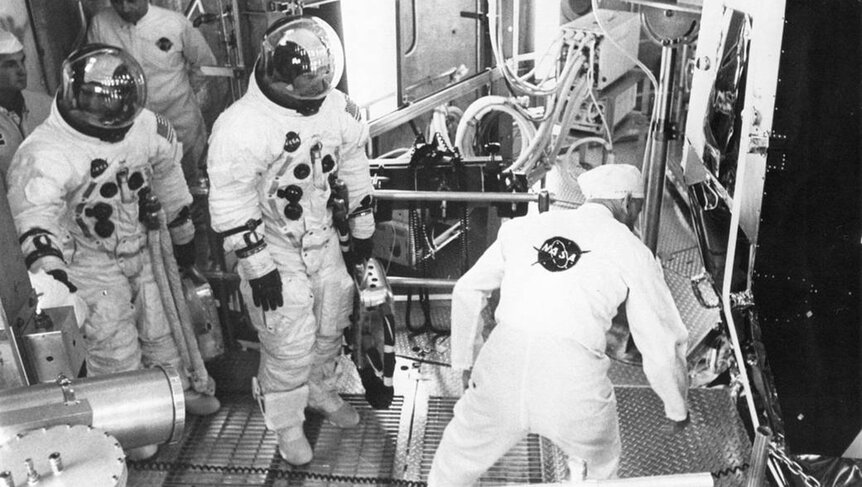Create a free profile to get unlimited access to exclusive videos, sweepstakes, and more!
NASA is trying to keep humans from contaminating the universe

When the Apollo 11 astronauts returned from taking one giant leap to the moon, there’s a reason they needed to spend three weeks quarantined in a strange metal contraption that vaguely resembled an oversized jukebox. Even the possibility of bringing some alien bacteria back from the moon was too terrifying for NASA and the rest of the planet.
Now NASA is trying to do the reverse. The space agency’s Planetary Protection Independent Review Board (PPIRB) recently released a report with their recommendations on how to keep Earthlings and everything they touch from contaminating the universe, while the guidelines in place for humans returning from the Moon, Mars, or some other destination in deep space have also been updated. We can’t be mistaking our own bacteria for micro-aliens just because we unknowingly brought it all the way to Mars.
“NASA should consider establishing high priority astrobiological zones, i.e., regions considered to be of high scientific priority for identifying extinct or extant life, and human exploration zones, i.e., regions where the larger amounts of biological contamination inevitably associated with human exploration missions, as compared to robotic scientific missions, will be acceptable,” said the report, which highlighted what NASA should prioritize when it comes to planetary protection.
Our species is moving toward new frontiers way too fast for NASA to ignore the possibility of false positives and breakout scares. While the findings and recommendations detailed in the report were extensive, here are some of the most significant ones.
Planetary protection will evolve at warp speed.
NASA kept emphasizing that planetary protection needs will be nothing like when this topic was last revisited during the ‘70s Viking era. Now that the private sector is sending robots, cubesats, and eventually human tourists to space, guidelines nobody even thought of before will need to be addressed. This is why the Planetary Protection Organization (PPO) has been revamped to handle present and future concerns.
Implementing requirements for planetary protection has been an expensive headache.
This is one reason such requirements absolutely must be worked out as early as possible when new missions are being figured out.
When it comes to non-NASA missions, the communication isn’t all there.
Missions that NASA has involvement in, but may not be leading, can range from public to private sector (like the SpaceX Starship). Hazy guidelines will only mean that getting private-sector spacecraft off the ground will take forever. NASA needs be clearer about the authority it has over other missions that it is involved in and should share its expertise with private entities that are also looking to explore other moons and planets.
The more we find out about other bodies in space, the more specific planetary protection guidelines will have to be.
Each destination will need special guidelines, because there are some places more likely to contain life and other places where the things that usually crawl on our own bodies could drop off and make scientists believe they are alien life when they’re really just freeloaders. Imagine if something from Earth hitched a ride on the Dragonfly and ended up in Titan’s rivers and lakes. If all the methane over there doesn’t kill it, it could end up multiplying and taking over.
We need to watch out for both forward (from Earth) and backward (from space) contamination.
Sometimes accidents like the massive Beresheet tardigrade spill happen, but this is another reason that the PPIRB needs to reassess what we must do to prevent spreading our germs throughout the universe. There needs to be specific processes, policies, and procedures carried out on the way to and from space.
If Elon Musk’s Tesla roadster can go the distance, imagine what microorganisms creeping out of a spacesuit can do.
(via NASA)















